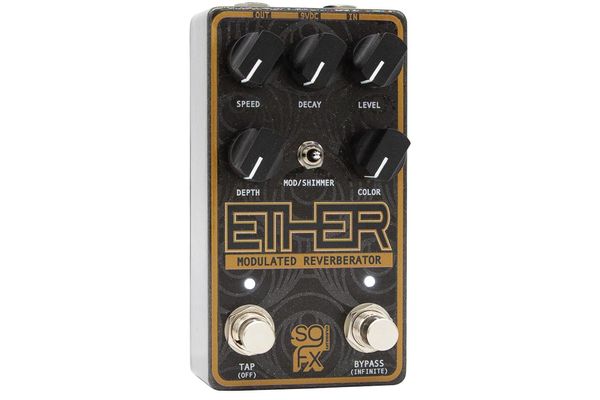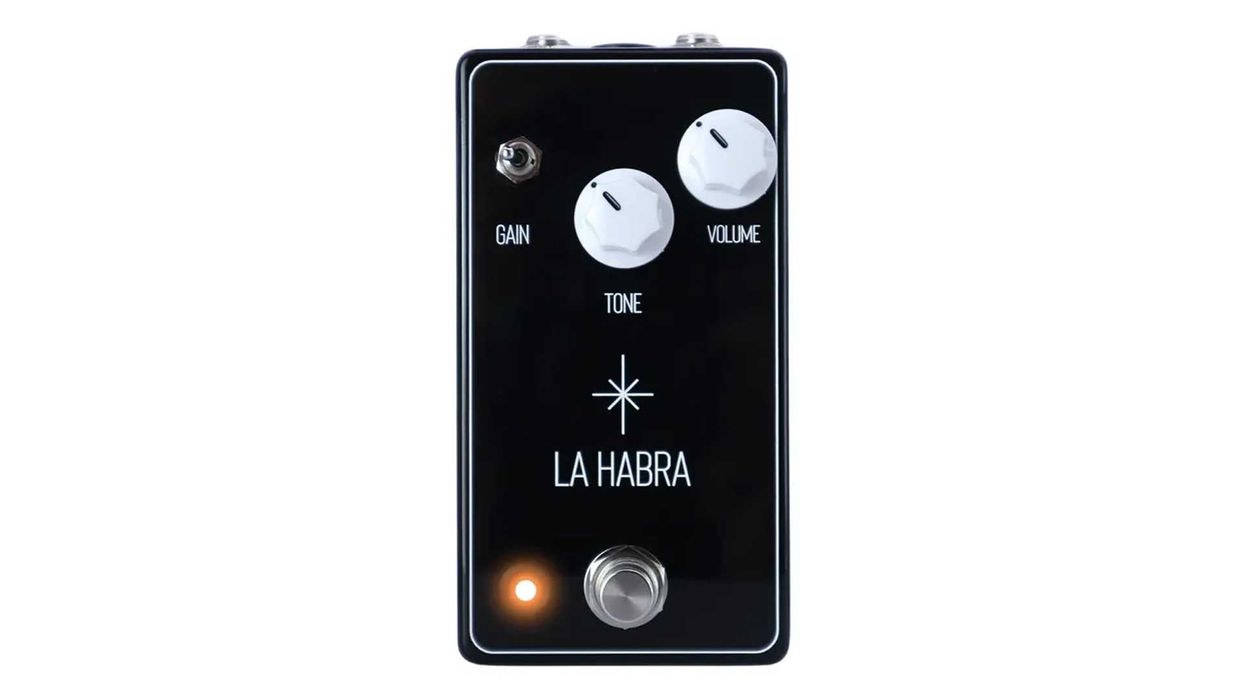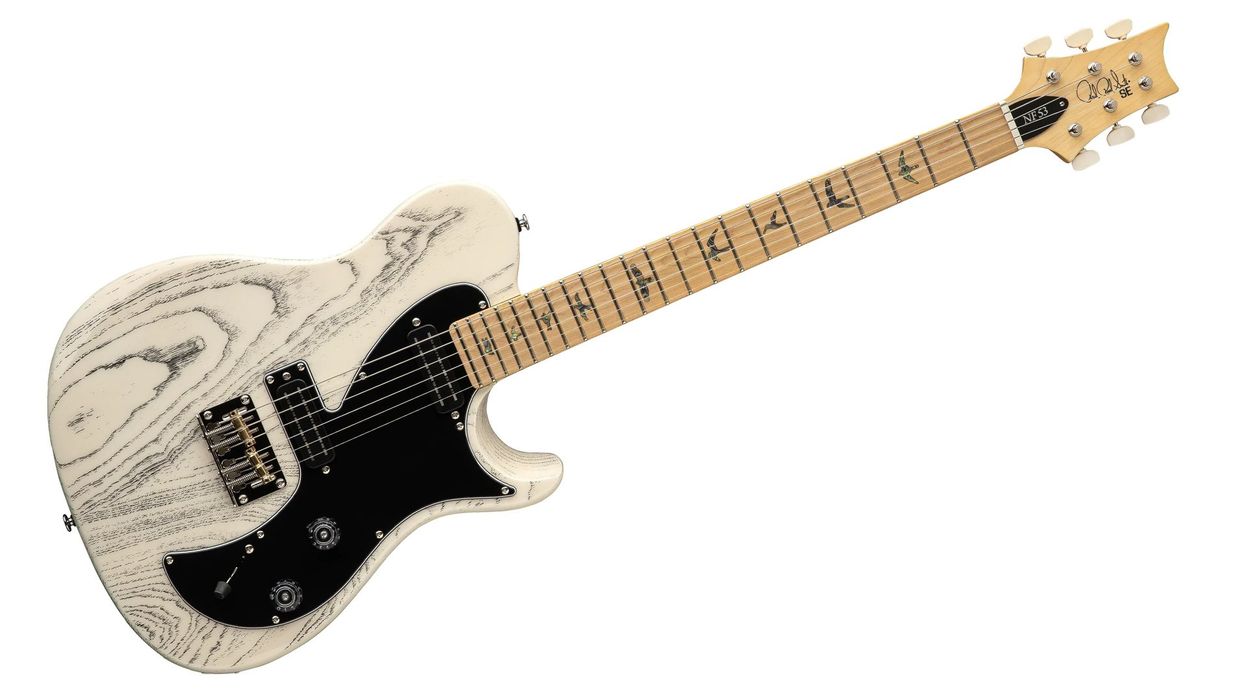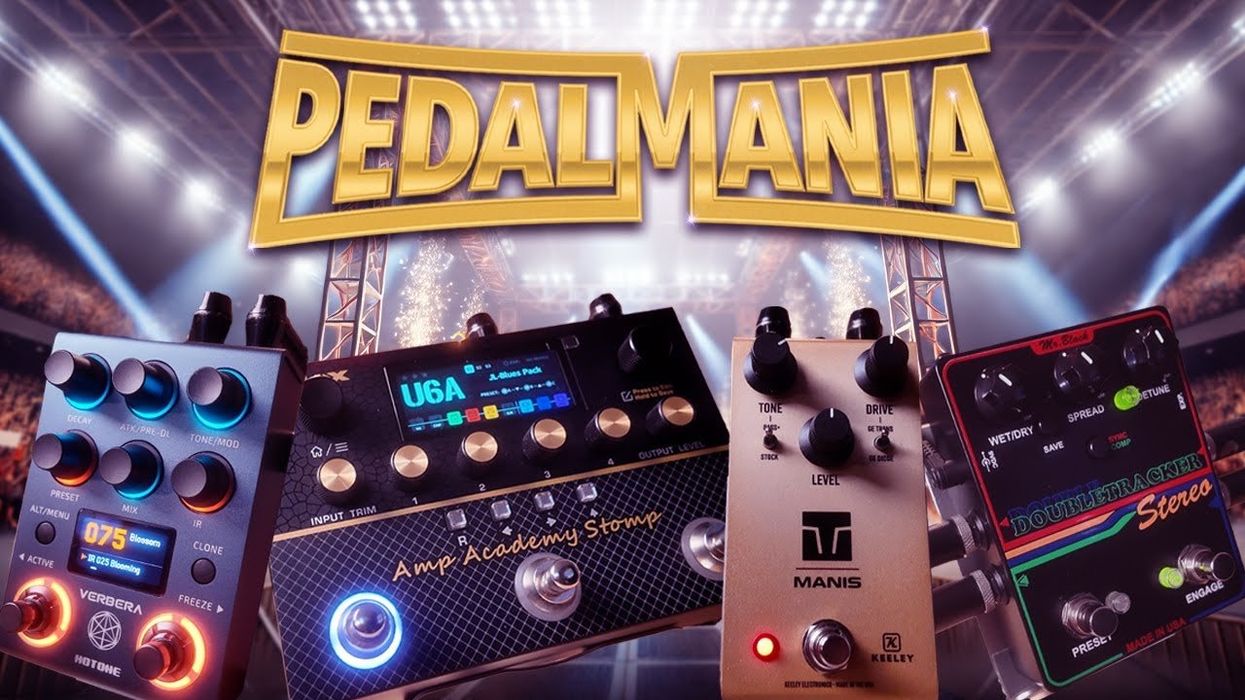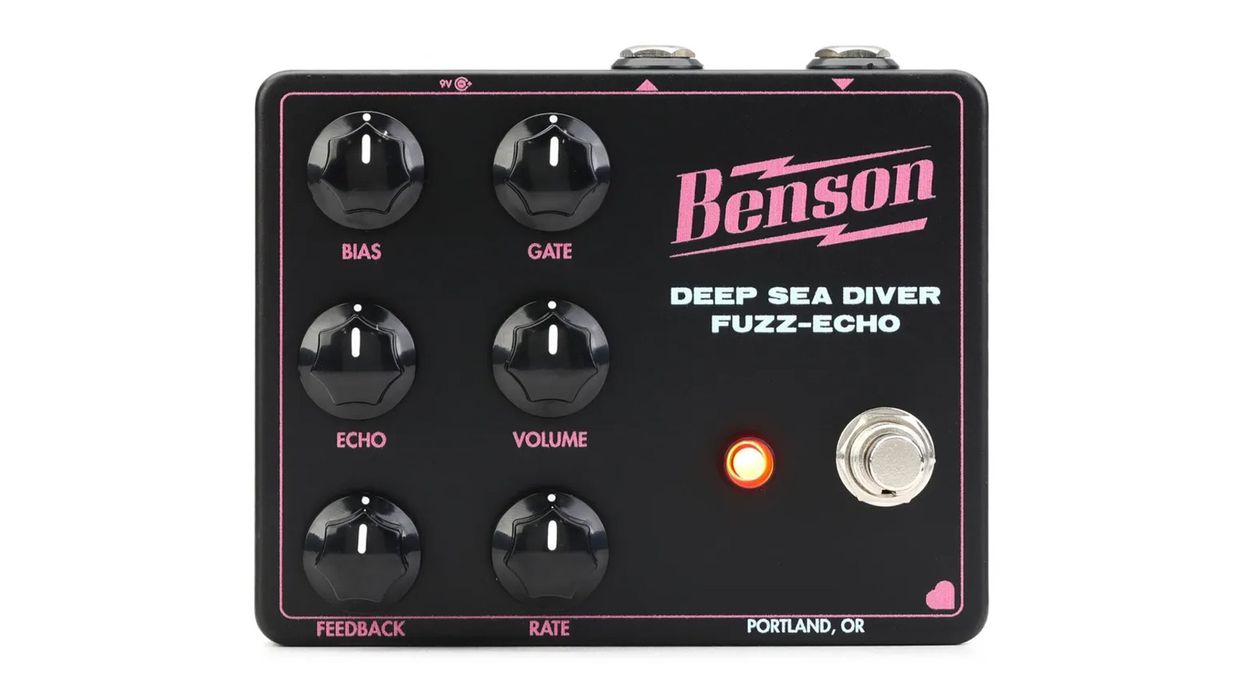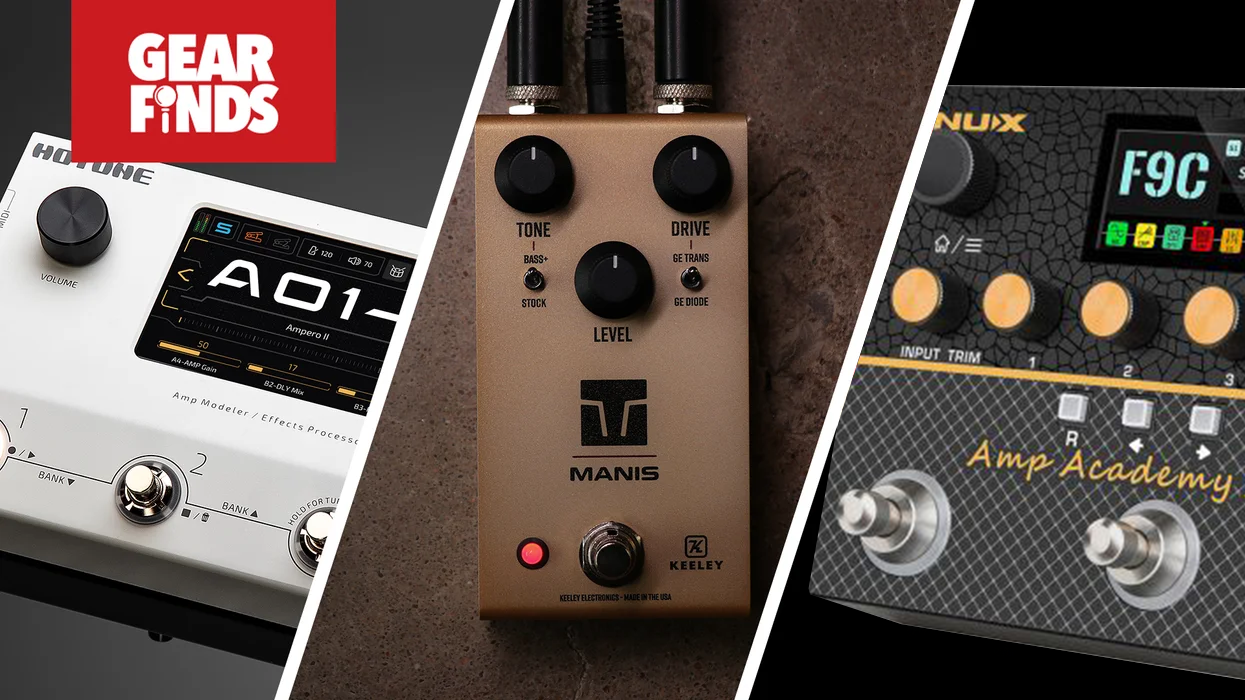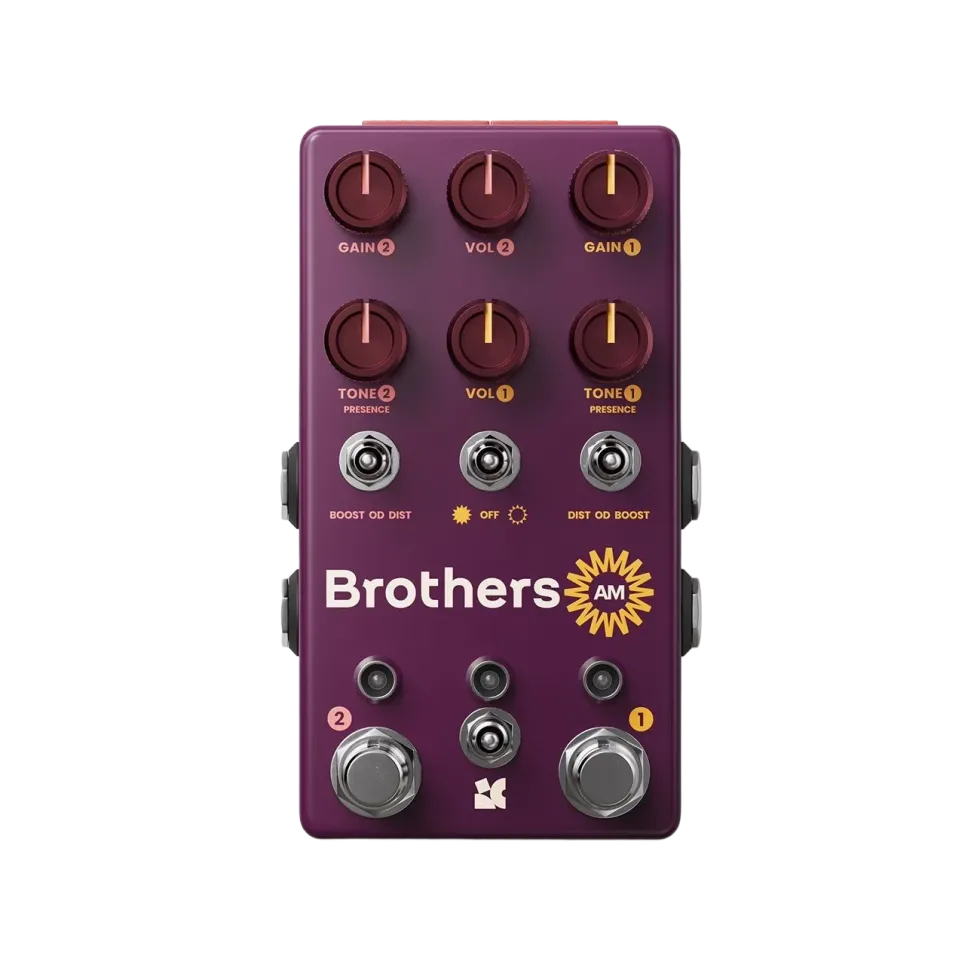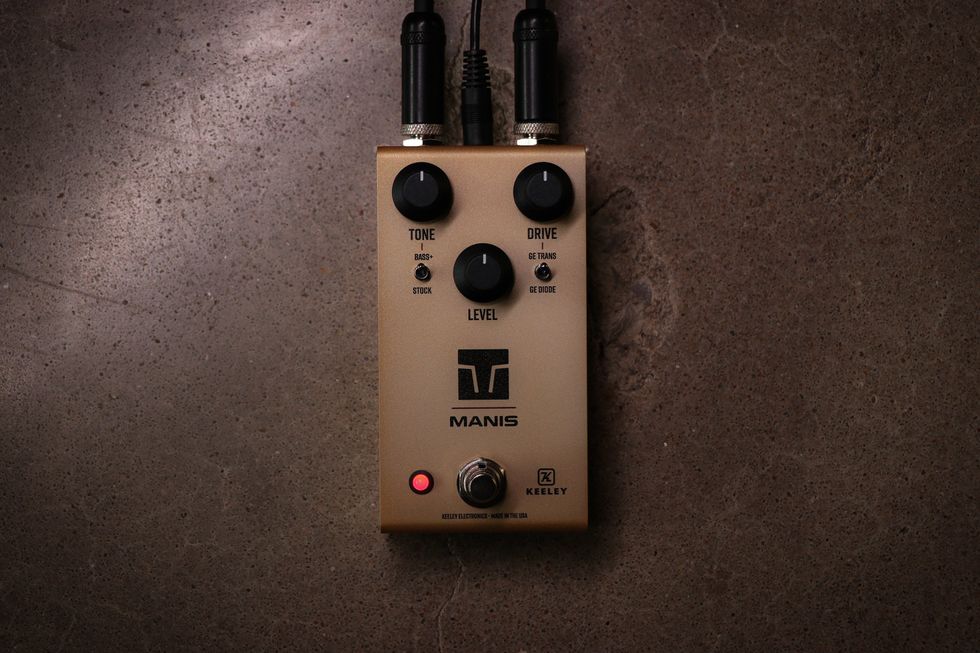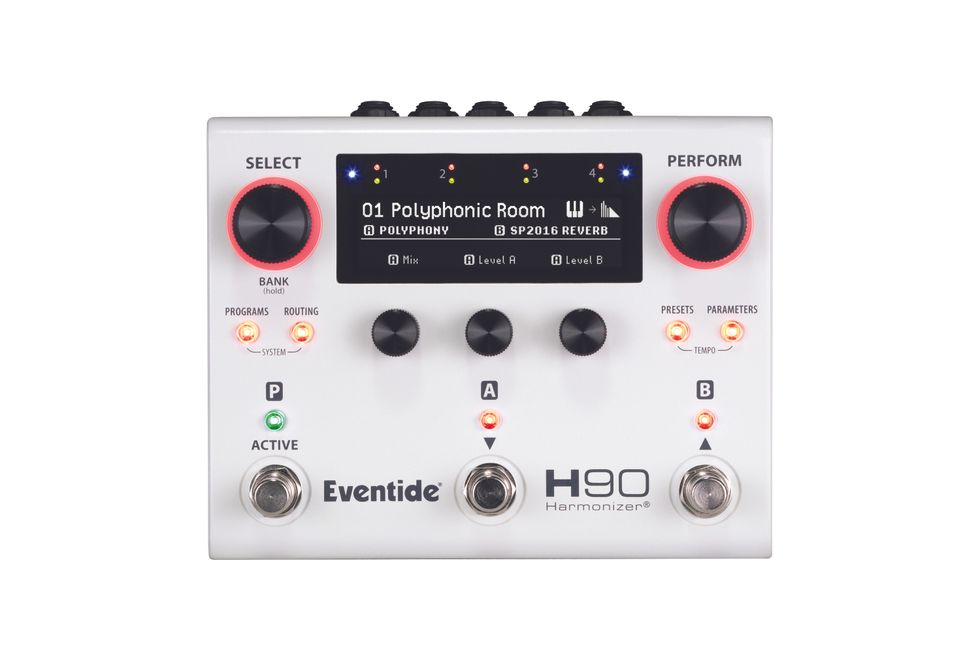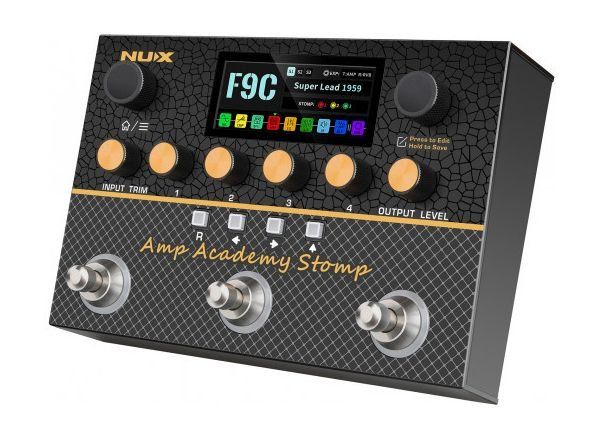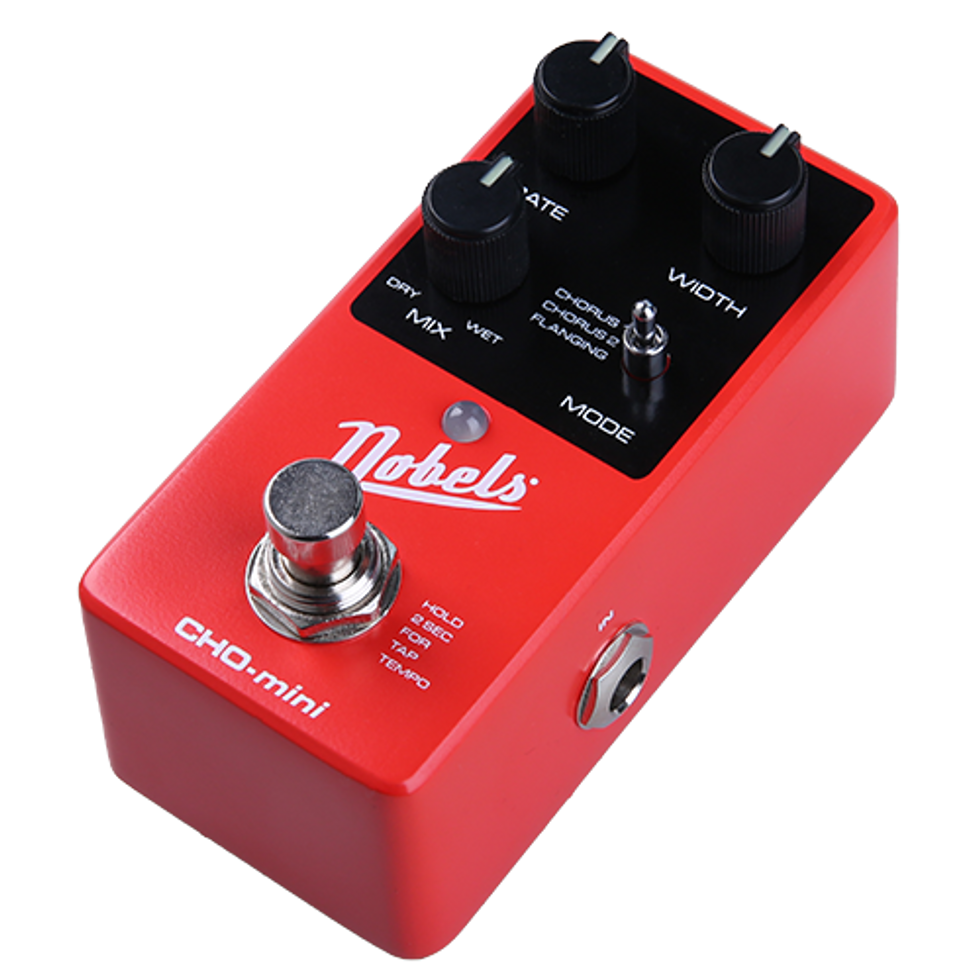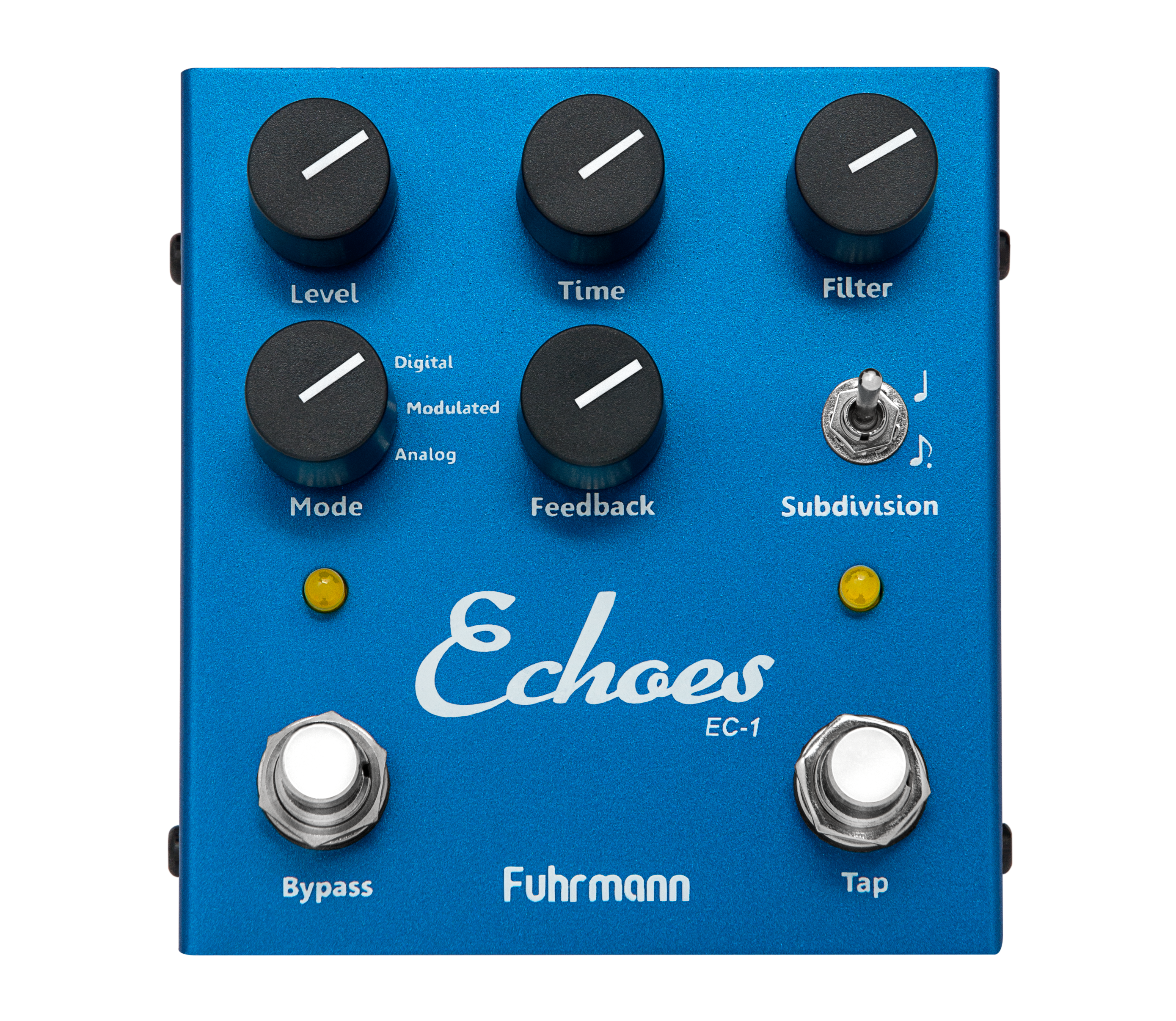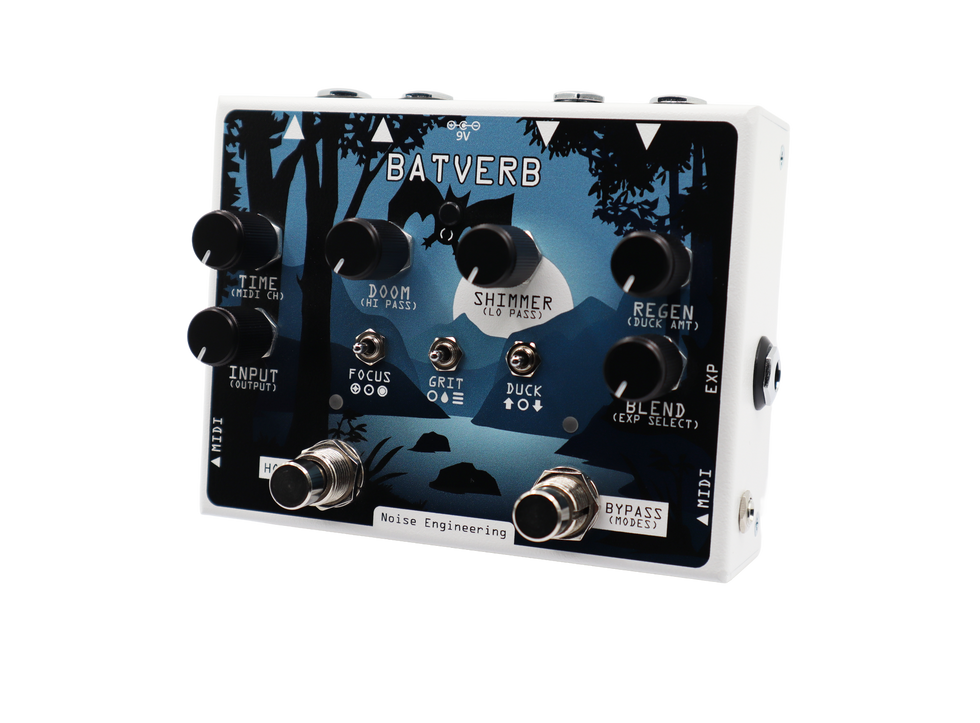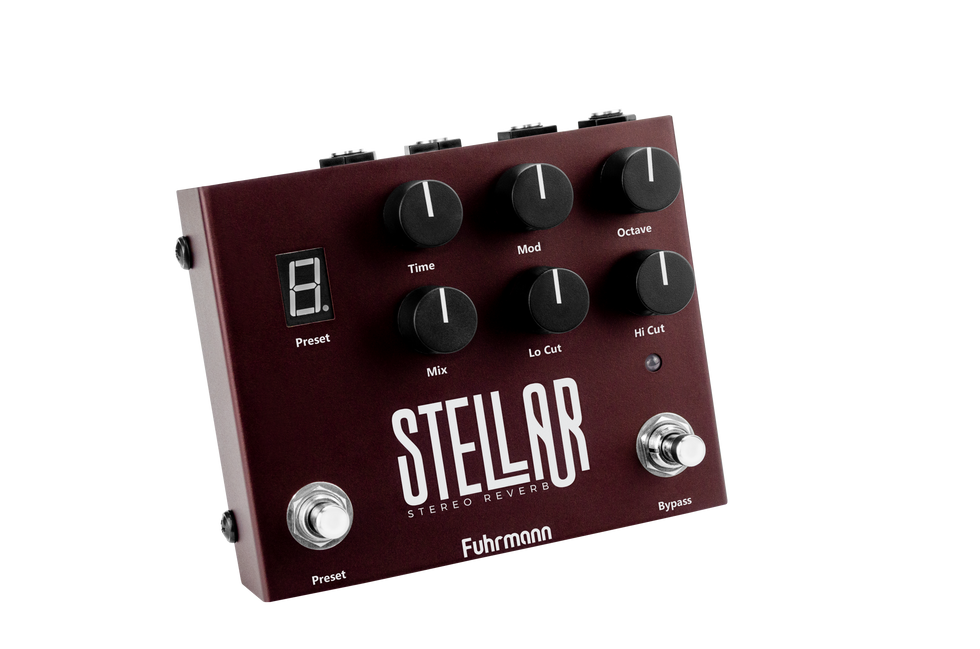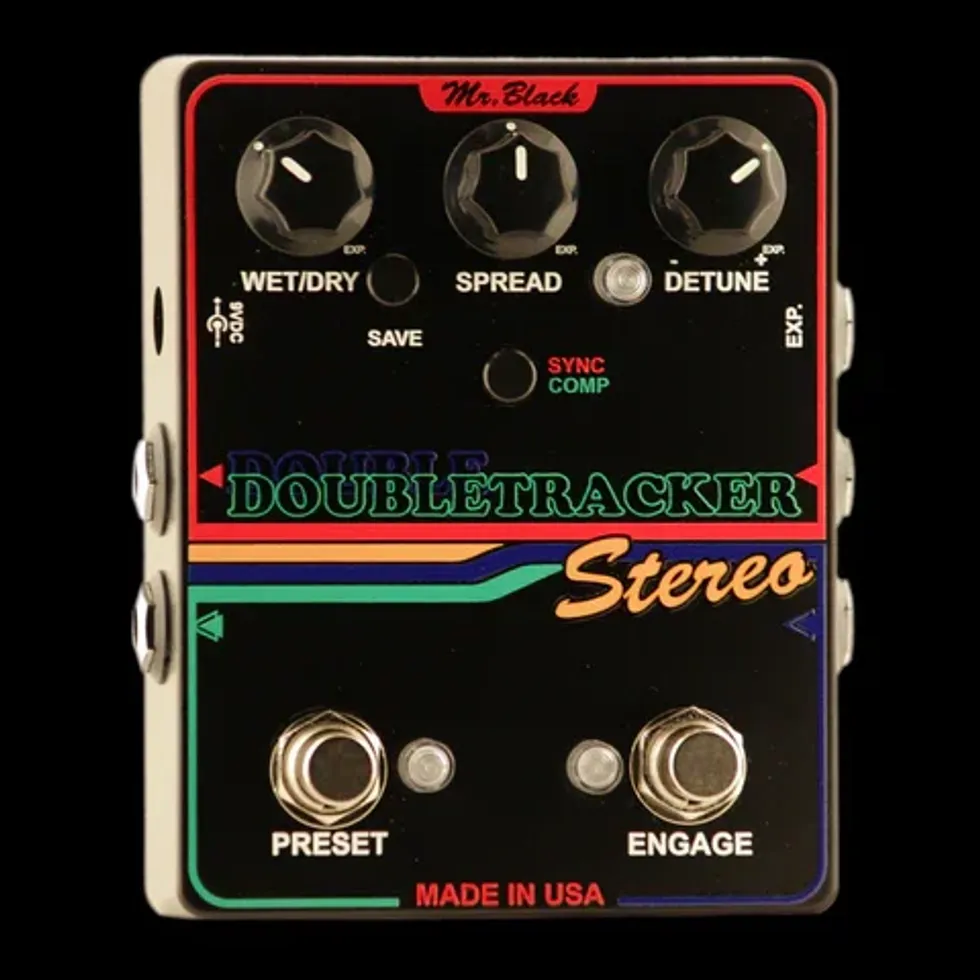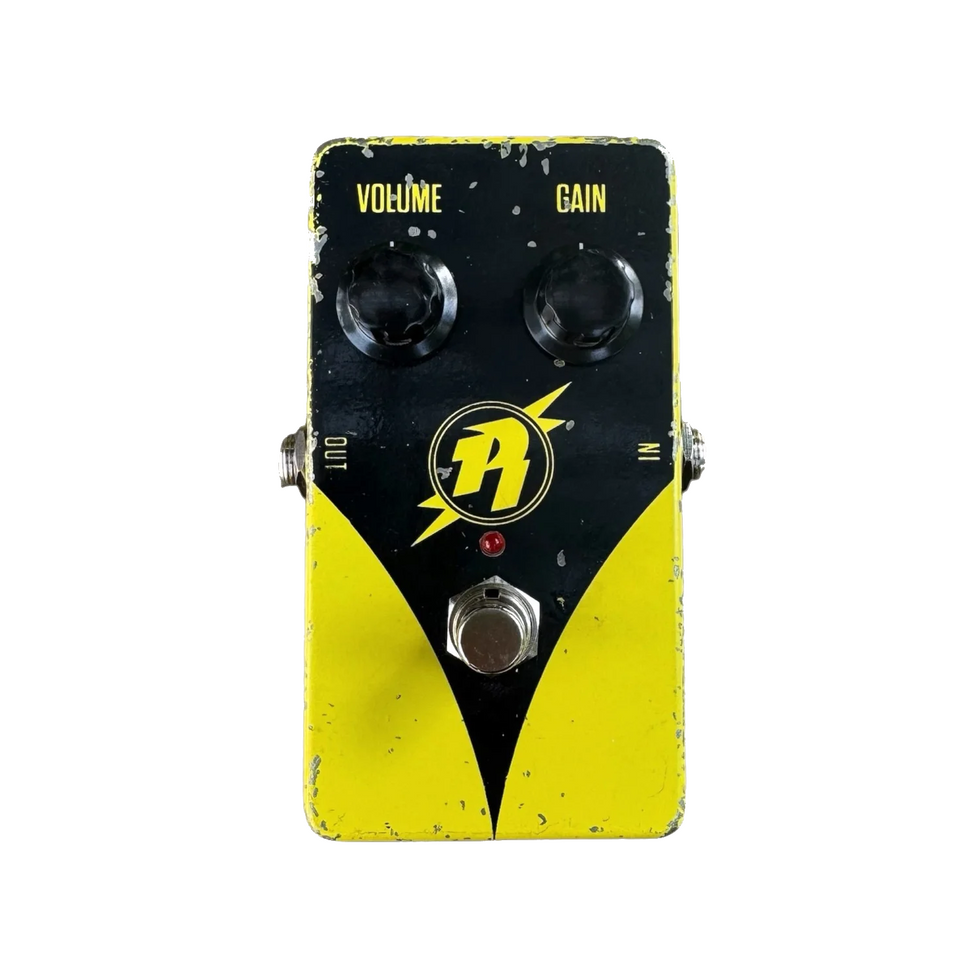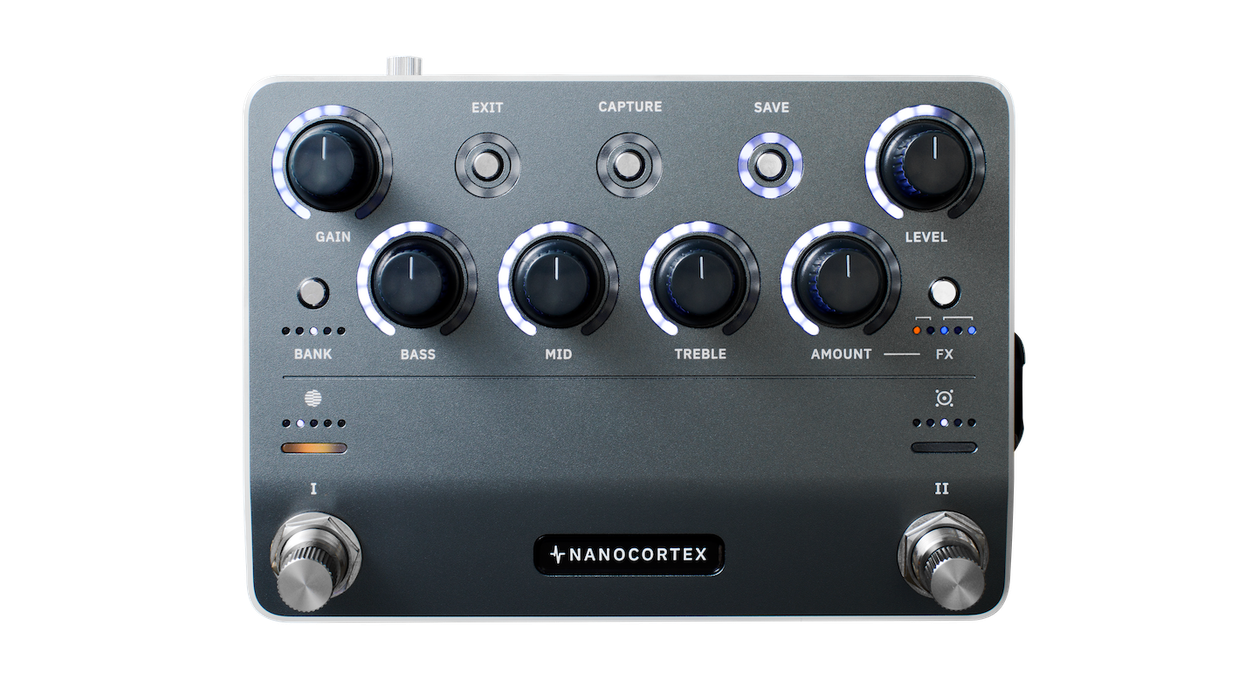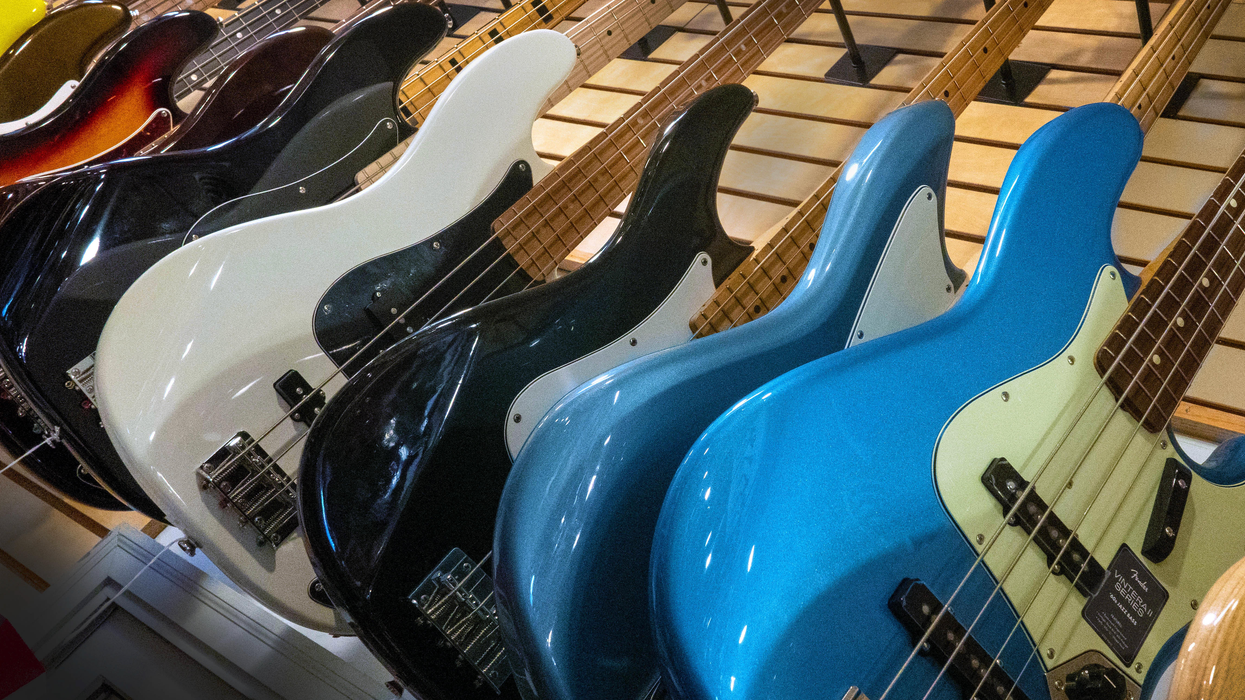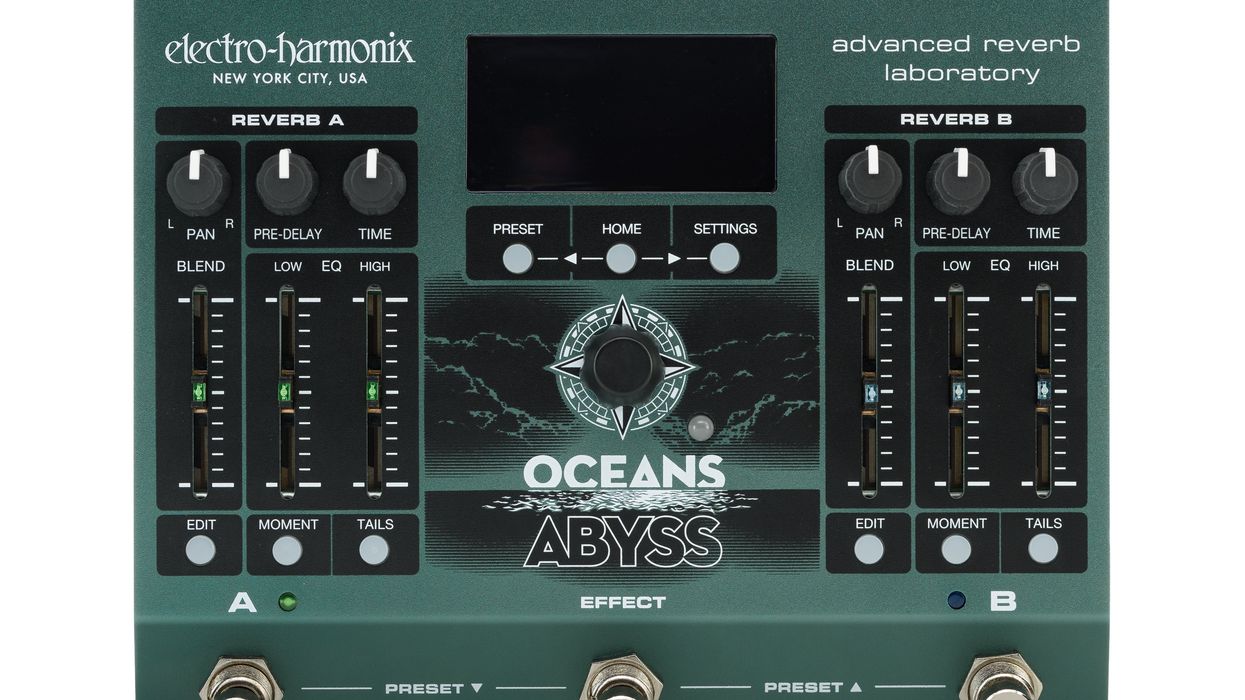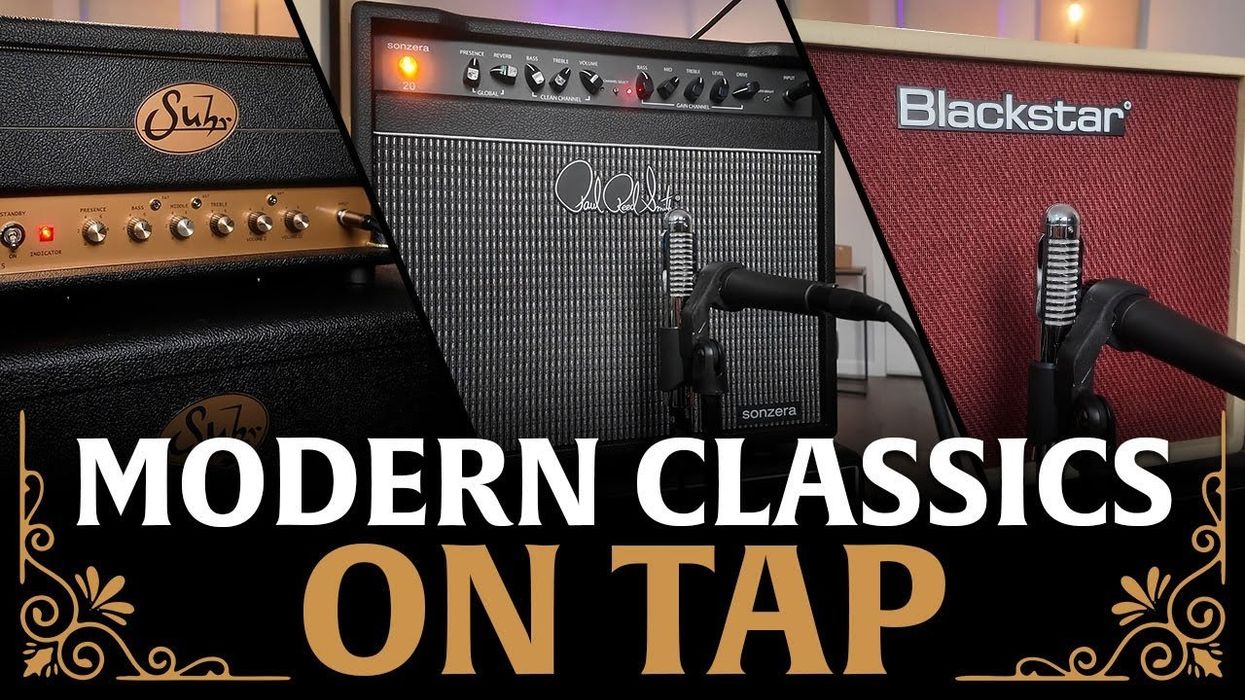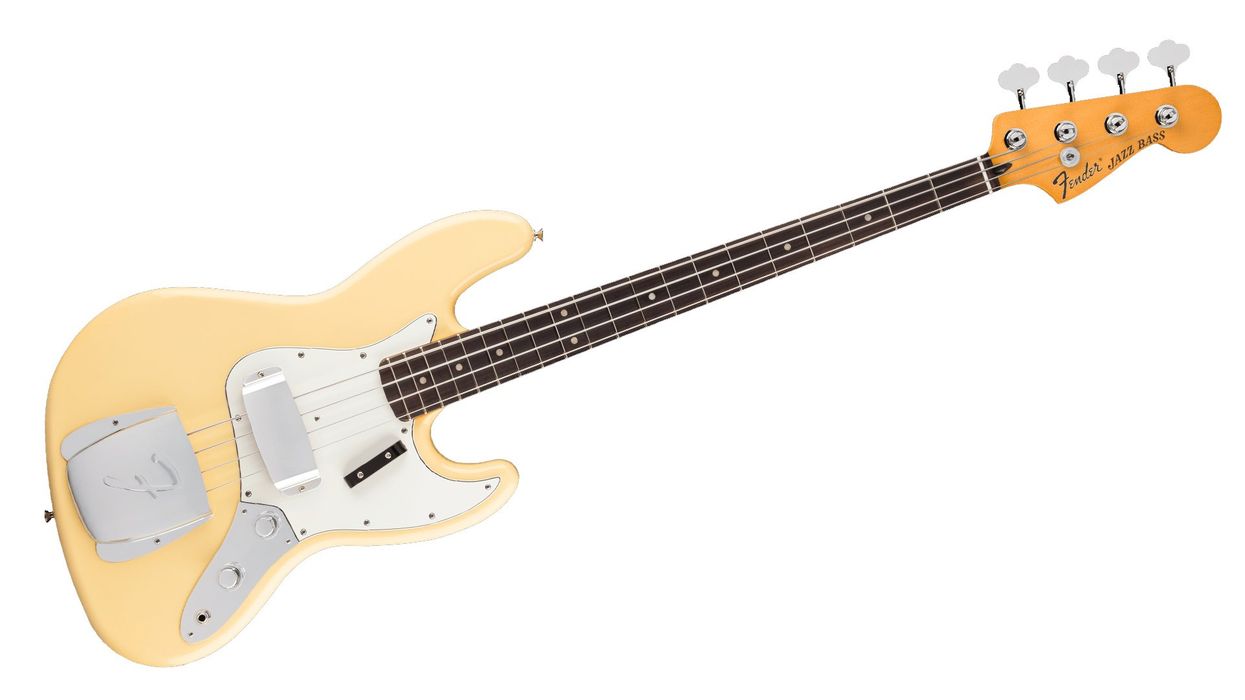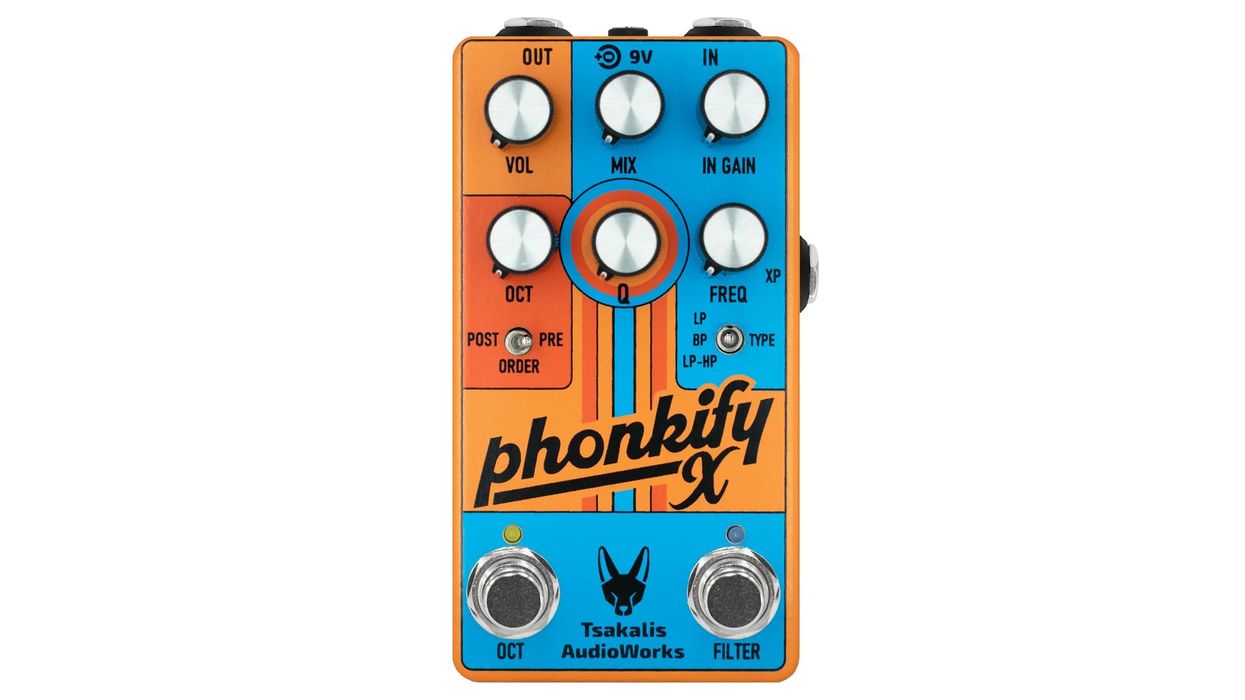A lot of cruel fates can befall a gig. But unless you’re a complete pedal addict or live in high-gain-only realms, doing a gig with just a reverb- and tremolo-equipped amp is not one of them. Usually a nice splash of reverb makes the lamest tone pretty okay. Add a little tremolo on top and you have to work to not be at least a little funky, surfy, or spacy. You see, reverb and modulation go together like beans and rice. That truth, it seems, extends even to maximalist expressions of that formula—like the SolidGold FX Ether.
The Ether is tricky enough to bewilder if you’re not careful. The three modulation modes—tremolo, harmonic tremolo, and vibrato—all feel, sound, and interact with the reverb differently. An economical but mildly complex control set definitely demands that you put in a little study. And few settings fit neatly into tidy categories like “vintage spring emulation” or “light hall.” But what the Ether lacks in super-intuitive operation it makes up for in surprises and a fluid user experience that can drag a player in new directions.
Slo-mo psychedelic power pop improvisation with SolidGoldFX Ether using vibrato, tremolo, and harmonic tremolo with many reverb decay and modulation speed and level mixes. Generated with Rickenbacker 330, black panel Fender Tremolux, and Universal Audio OX with a Vox AC30 cabinet emulation.
Deep Thought
For guitarists accustomed to simple pedal reverbs, the Ether will take some work to master. There are just five knobs for tone (color), modulation depth and speed, reverb decay, and a wet/dry mix that functions as the level for both the reverb and modulation. A 2-way toggle switches between the three modulation modes or introduces a shimmer effect. What looks simple on the surface, however, belies great complexity among the available sounds. The modulation depth control alone, for instance, is full of tricks. It controls modulation waveform intensity but can also significantly re-cast the voice and response of the three modulation voices. In addition to intensity, depth also changes the shape of the modulation. On one side of noon the pedal generates sawtooth waves; on the other side, softer sine waves. Somewhat counterintuitively, waveform depth is most intense at clockwise and counterclockwise extremes and least intense closest to noon. Additionally, the noon position is a quasi-random waveform in vibrato mode, a square wave in tremolo mode, and a flutter triangle wave in harmonic triangle mode. So, while it’s fun to twist knobs at random to see what you can conjure, getting some semblance of control over the sonic outcome takes paying close attention to how these variables relate to each other.
There are cool, subtle sounds in Ether, even if subtle isn’t exactly a specialty.
The knobs are sensitive, too. This is great for fine-tuning settings when you have an intuitive, muscle-memory-based handle on how the controls work. But they can feel twitchy at first. Nowhere is this more apparent than in reverb decay and level. They each have considerable range. But the lowest level and decay settings primarily yield big reverb sounds. There are cool subtle sounds in the Ether, even if subtle isn’t exactly a specialty. On the mellower side of the Ether’s envelope, I dialed in a reasonable-enough facsimile of an old Fender black-panel spring reverb set to noon, as well as some really cool tile-like, fast-reflection sounds. But the differences between them on the level and decay controls were small and it can be hard to nail in-between sounds reliably. If you largely live your reverb life on the subdued side of splashy, you might want to look elsewhere.
The Ether’s controls are expansive on the modulation side as well. But each modulation mode also moves through very different ranges of intensity. Vibrato modulation, for instance, sounds very intense at high depth settings in relatively dry mixes. Harmonic tremolo voices, however, need a much wetter signal to stand out prominently. Regular tremolo settings tend to require high effect levels (which means you need to mind your reverb decay settings as well). Again, these differences make practice key. But relinquishing control can be just as satisfying. The harmonic tremolo reverbs can span phasey washes and noirish throb. Standard tremolo, while not the most radical effect, provides fast-twitching or hypnotic icing to metallic hyper-springy surf-ish settings. Vibrato’s reverb settings, meanwhile, can range from surreal, robotic modulations to sweet near-rotary sounds. Finding the points where these sounds intersect and mingle is a joy if you have the time to spare.
The Verdict
Apart from the Ether’s lack of low-key, conventional reverb sounds and interactive, trickier-than-it-looks controls, it’s hard to not fall under the device’s spell. If you have time to kill, getting lost in the mega-expansive controls, many combinations of modulation textures, and fields of reverb-based overtones can create pure joy. If you’re inclined toward option fatigue or dread getting lost in quirky controls onstage, there are simpler ways to get your reverb fix. But if it’s big-to-bigger spaces you’re after and the ability to render them distinct, mutant, and wild with washes of tremolo, vibrato, and phasey textures, the Ether is an almost endless amusement park of clanging, bouncing, ringing, and resplendent modulations.
